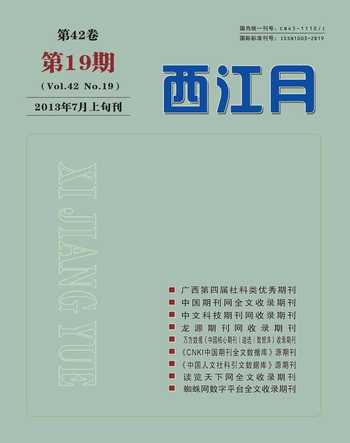Basic Principles of Translation
【摘要】国内的译者以及翻译理论家一直以来信守翻译三原则:信,达,雅。然而随着国家的改革开放,同时也引进了国外的许多翻译理论,当中不乏有:当代美国翻译理论之父,尤金.奈达提出的“动态对等”,“功能对等”,“信息原则”以及“关注读者反应”。
【关键词】翻译;译者;原则
【Abstract】In China, both translators and translation theorists have been abiding by the triplet principles of translation: faithfulness, expressiveness, and elegance. Nevertheless, with the policies of “reform and opening to the outside world”, many translation theories have been introduced from foreign countries, among which are “dynamic equivalence”, “functional equivalence”, “message theory”, as well as “readers response” advocated by Eugene Nida, the father of translation theory in the contemporary United States of America.
【Key words】translation, translator, principle
1. Introduction
Translation is the interpreting of the meaning of a text and the subsequent production of an equivalent text, likewise called a “translation,” that communicates the same message in another language. The text to be translated is called the “source text,” and the language that it is to be translated into is called the “target language”; the final product is sometimes called the “target text.”
Translation must take into account constraints that include context, the rules of grammar of the two languages, their writing conventions, and their idioms. A common misconception is that there exists a simple word-for-word correspondence between any two languages, and that translation is a straightforward mechanical process; such a word-for-word translation, however, cannot take into account context, grammar, conventions, and idioms.
2. The Development of Principles
Discussions of the theory and practice of translation reach back into antiquity and show remarkable continuities. The distinction that had been drawn by the ancient Greeks between “metaphrase”(“literal” translation) and “paraphrase” would be adopted by the English poet and translator John Dryden (1631-1700), who represented translation as the judicious blending of these two modes of phrasing when selecting, in the target language, “counterparts,” or equivalents, for the expressions used in the source language:
When words appear… literally graceful, it were an injury to the author that they should be changed. But since… what is beautiful in one [language] is often barbarous, nay sometimes nonsense, in another, it would be unreasonable to limit a translator to the narrow compass of his authors words: ‘tis enough if he chooses out some expression which does not vitiate the sense.[2]
Dryden cautioned, however, against the license of “imitation,” i.e. of adapted translation: “When a painter copies from the life… he has no privilege to alter features and lineaments…” [2]
This general formulation of the central concept of translation — equivalence — is probably as adequate as any that has been proposed ever since Cicero and Horace, in first-century-BCE Rome, famously and literally cautioned against translating “word for word” (“verbum pro verbo”). [2]
Despite occasional theoretical diversities, the actual practice of translators has hardly changed since antiquity. Except for some extreme metaphrasers in the early Christian period and the Middle Ages, and adapters in various periods (especially pre-Classical Rome, and the 18th century), translators have generally shown prudent flexibility in seeking equivalents — “literal” where possible, paraphrastic where necessary — for the original meaning and other crucial “values” (e.g., style, verse form, concordance with musical accompaniment or, in films, with speech articulatory movements) as determined from context. [2]
When a target language has lacked terms that are found in a source language, translators have borrowed them, thereby enriching the target language. Thanks in great measure to the exchange of calques and loanwords between languages, and to their importation from other languages, there are few concepts that are “untranslatable” among the modern European languages. [2]
3. Conclusion
The translators role as a bridge for “carrying across” values between cultures has been discussed at least since Terence, Roman adapter of Greek comedies, in the second century BCE. Dryden observed that “Translation is a type of drawing after life…” Comparison of the translator with a musician or actor goes back at least to Samuel Johnsons remark about Alexander Pope playing Homer on a flageolet, while Homer himself used a bassoon.[2]The special role of the translator in society was well described in an essay, published posthumously in 1803, by Ignacy Krasicki — “Polands La Fontaine”, Primate of Poland, poet, encyclopedist, author of the first Polish novel, and translator from French and Greek: Translation… is in fact an art both estimable and very difficult, and therefore is not the labor and portion of common minds; [it] should be [practiced] by those who are themselves capable of being actors, when they see greater use in translating the works of others than in their own works, and hold higher than their own glory the service that they render to their country. [2]
【References】
[1]Cohen, J.M. Translation. Encyclopedia Americana, 1986, vol. 27, pp. 12–15.
[2] Eugene A. Nida.Toward a Science of Translating [M]. Leiden: E.J.Brill, 1964.
[3]谭卫国,蔡龙权.新编英汉互译教程[M].上海:华东理工大学出版社,2005.
[4]谭载喜.新编奈达论翻译[M].北京:中国对外翻译出版公司,1999.
[5]郭建中.当代美国翻译理论[M].武汉:湖北教育出版社,1999.
作者简介:张超,现在四川外语学院成都学院。

